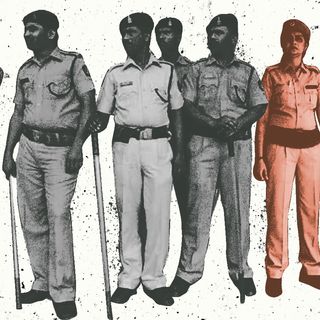Women are missing from Covid19 news reporting, perspectives and decisions, a new report commissioned by the Bill & Melinda Gates Foundation found. Women experts were largely “drowned out” by men in news expertise pieces; women were rarely the primary subject of news stories; and Covid19 coverage through a gender lens was largely missing in the top news outlets in six countries, including India.
“Every individual woman’s voice in the news on Covid19 is drowned out by the voices of at least three, four, or five men,” the report, assembled by the global firm, Addy Kassova Audience Strategy, found. “The women who are given a platform in the Covid19/coronavirus story are rarely portrayed as authoritative experts or as empowered individuals but more frequently as sources of personal opinion or as victims/people affected by the disease.”
This has led to a cross-continental “locking out” of women from mainstream Covid19 narratives. One possible reason the report gives for this discrepancy is the war-like connotations the media attached to the pandemic, reinforcing notions of masculinity and maleness in its rhetoric, reinforcing the idea that men are better able to handle the pandemic, and women are best kept out. This has resulted in women having “limited influence over the framing of the crisis in the news and consequently, limited influence over policymaking directions.”
Related on The Swaddle:
U.N. Presents Framework to Mitigate Covid19’s Impact on Women
This discrepancy also reflects the marginalization of women in the individual countries — in India, for example, 86% of the Covid19 response decision-making group are men, which led to journalists falling back on well-established male sources for stories, ending up quoting men five times more often than they did women. Their absence in the framing of Covid19 narratives also meant the stories that performed the best across the six countries also did not feature women as protagonists. In India, for example, women were three times less likely to be the subject of news headlines, with the problem worsening in countries like U.S. and Nigeria. All of this culminated in keeping women-centric stories out of mainstream Covid19 narratives, with a hard focus on health severity and economic consequences completely overshadowing the need to highlight women’s specific concerns in the pandemic, such as childcare issues, domestic violence, and work-life balance.
Drowning out women’s voices in the news during this pandemic also does a disservice to the public who needs accurate, reliable, and contextualized reports from the frontline — where women make up a majority of workers in the fields of personal care, healthcare, and food preparation. A lack of specific targeting and inclusion of women in the news also means ignoring the majority proportion of women who are caregivers at home, who need to form informed opinions about their lives in order to take care of their families. Tack on top the specific economic challenges and psychological obstacles women have faced in this pandemic, and them being ignored in the news, from all the way at the top to the ground level, starts to signal a particularly malicious, patriarchal, and sexist stereotype. It’s one that many had hoped would be reversed because of the severity of this pandemic and all the lessons it was supposed to teach us but turns out it was simply wishful thinking.




